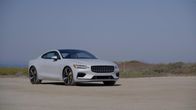Boutique Japanese supercars are kind of a mixed bag. On the one hand, you get things like the Dome Zero, which was like a rad Japanese Lamborghini Countach. Still, on the other hand, you get stuff like the Mitsuoka Orochi, which is as close to an automotive styling crime against humanity as I’ve yet seen.
One car that has kind of straddled the line between incredible and terrible during what felt like a nearly interminable gestation period has been the Aspark Owl, and now, according to a release Tuesday by the company, it’s finally hatched.
Why is this a big deal? Well, Aspark claims that its Owl — with its $3.2 million price tag and a production run of 50 cars — is the world’s quickest car to 62 miles per hour (or 100 kilometers per hour, if you’re of the metric persuasion).
How does this car that looks like a mashup of a VW-powered fiberglass Porsche 917 kit car and a Lamborghini that a circus elephant sat on manage its claimed 1.69-second sprint? Try four big electric motors that produce 1,985 horsepower and 1,475 pound-feet of torque that are wired up to a 64-kilowatt-hour lithium-ion battery pack.
Design is subjective; performance is measurable.
Aspark
Apart from having a reasonably polarizing aesthetic, some cool things are going on with the design of the Owl. The first of which is its total height, which is a staggeringly low 38.97 inches. For comparison’s sake, the Ford GT40 race car from the 1960s was known for being just 40 inches tall, and that thing is pretty shocking when you see it in person.
The Aspark Owl’s carbon monocoque chassis weighs just 265 pounds, and the car’s body is made almost exclusively from carbon fiber reinforced plastic (CFRP) panels. There’s a stainless-steel support structure in the roof to help add strength to the car as well. Aspark’s website pegs the car’s curb weight at 4,188 pounds, which isn’t exactly featherweight but not terrible for an EV with this kind of performance.
For the Owl’s suspension, Aspark decided to go with tried-and-true double-wishbone suspension and height-adjustable hydraulic dampers at all four corners. Is it a hypersophisticated system? Nope, but will it likely work without issue? Yep. The company also opted to go with carbon-ceramic brakes at all four corners, with 10-piston calipers in the front and four-piston units in the back.
We’re not totally sure what’s going on with the Owl’s interior, but we can bet based on it being an EV and Aspark being interested in shaving weight that it’ll be minimalistic. Press photos do show that it’ll have at least four screens inside, with two serving as rearview mirrors. Beyond that and parchment-colored leather, it’s anyone’s guess.
Aspark hopes to have the first customer cars ready by the summer of 2020.

